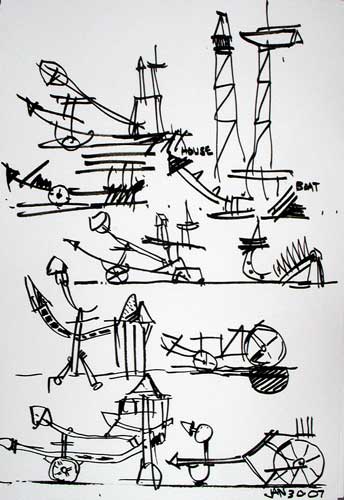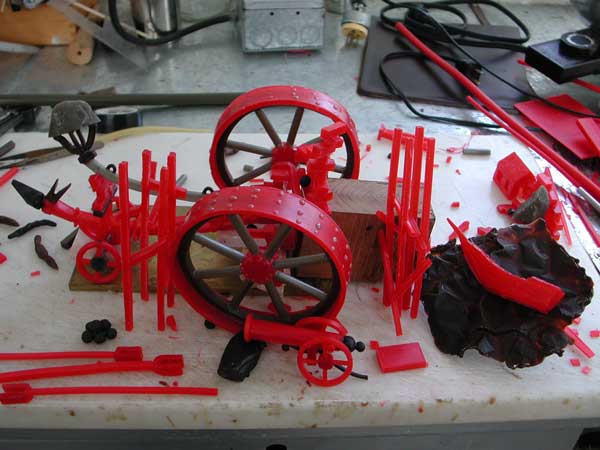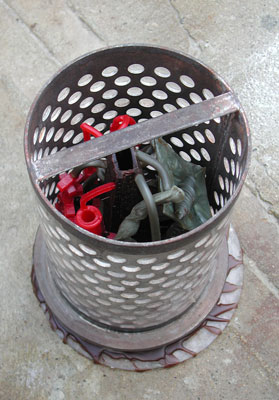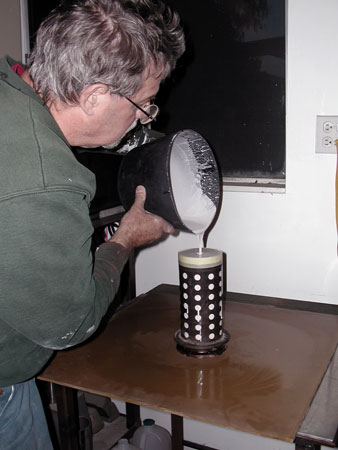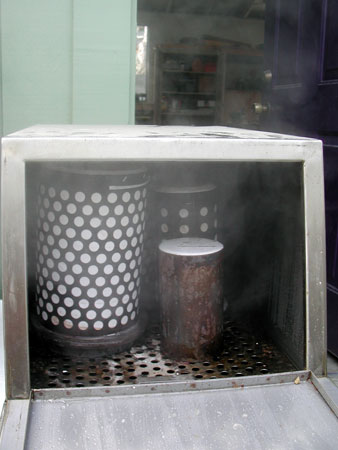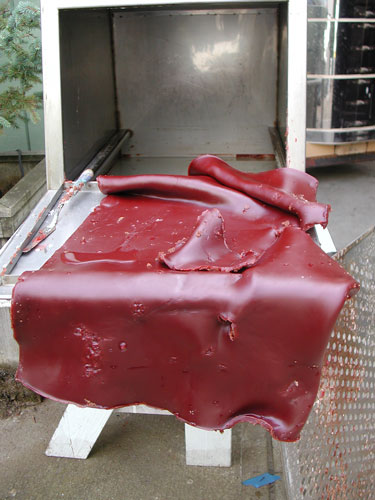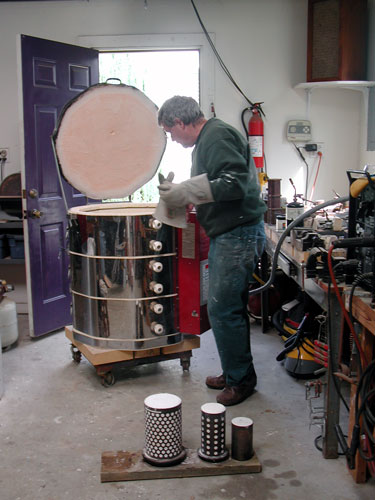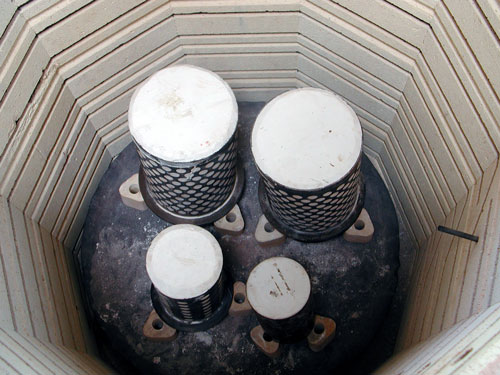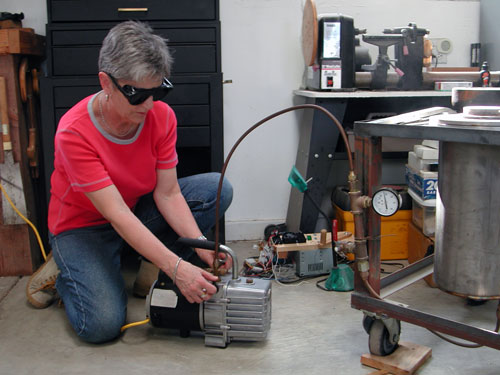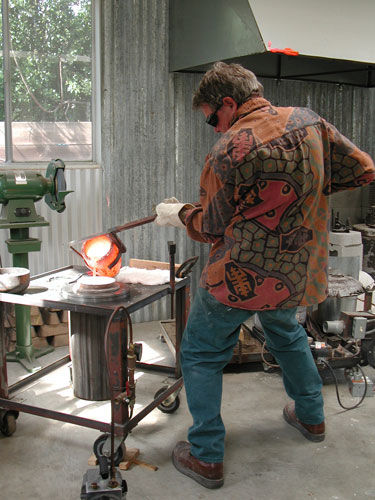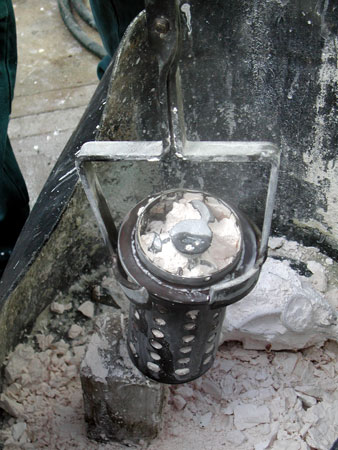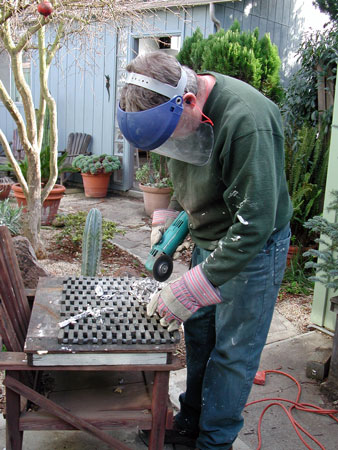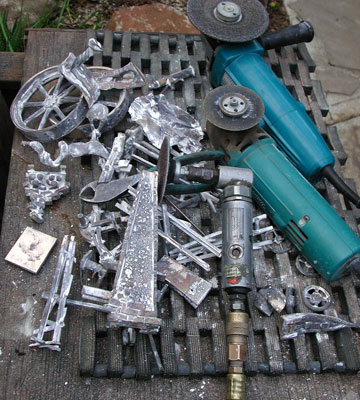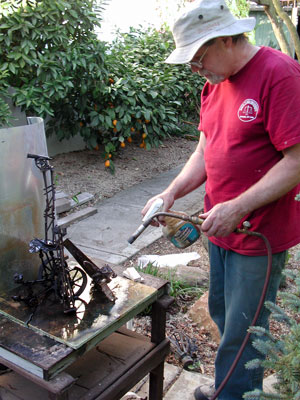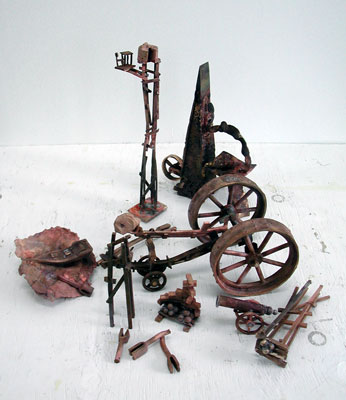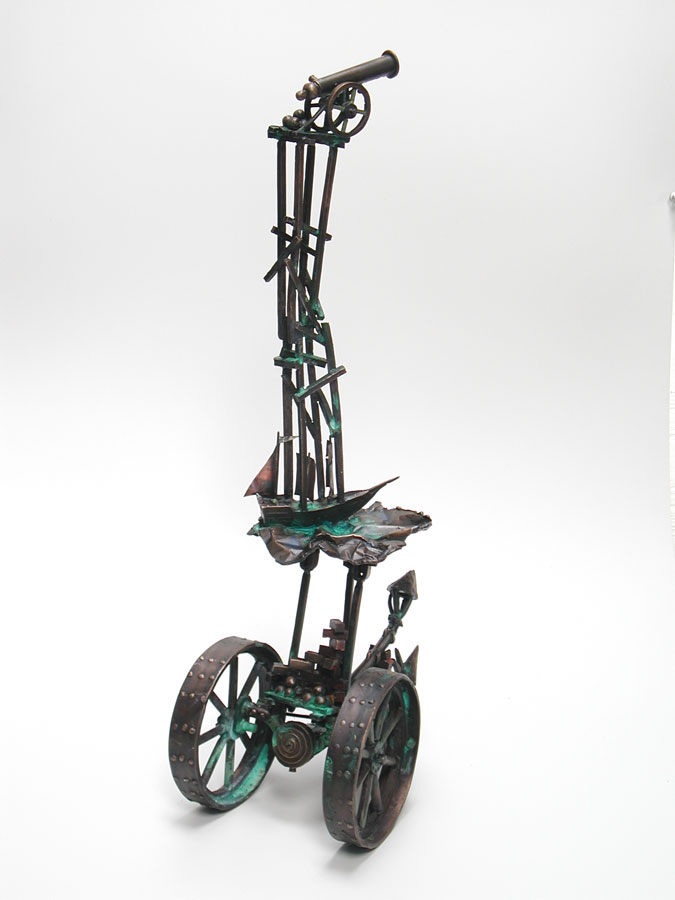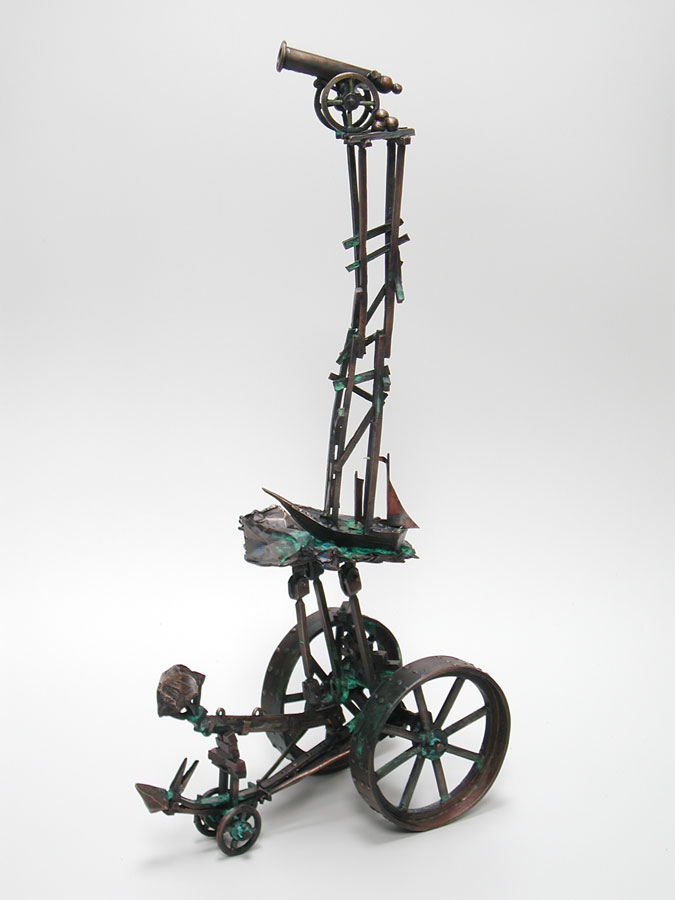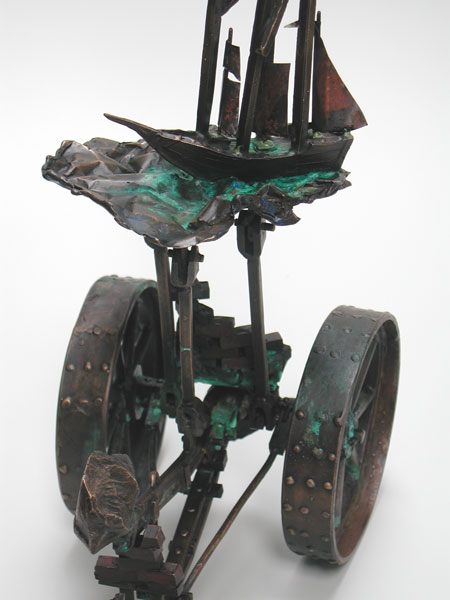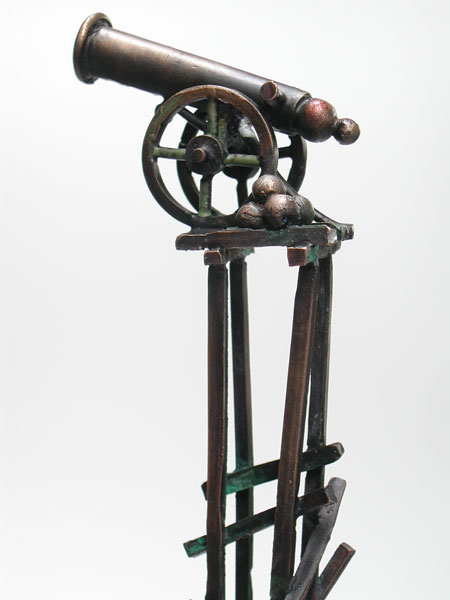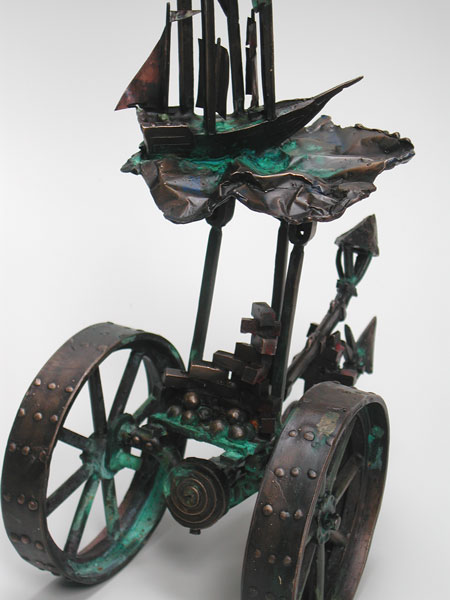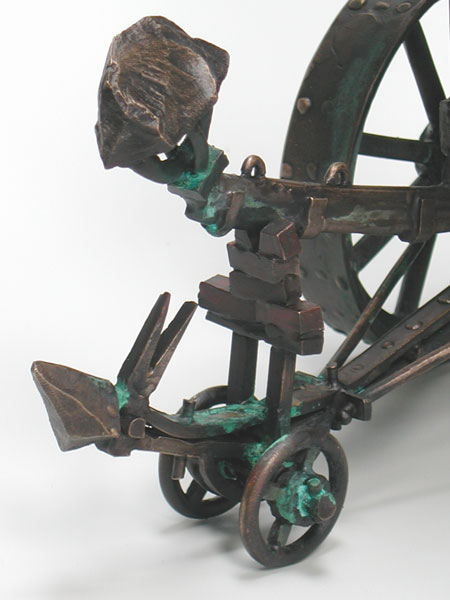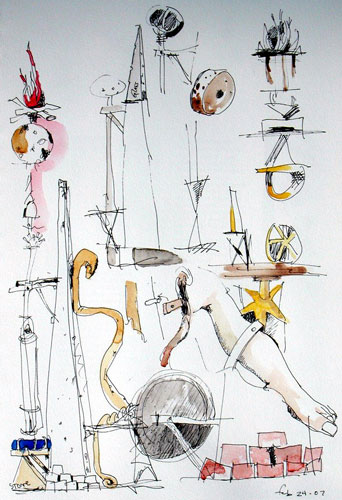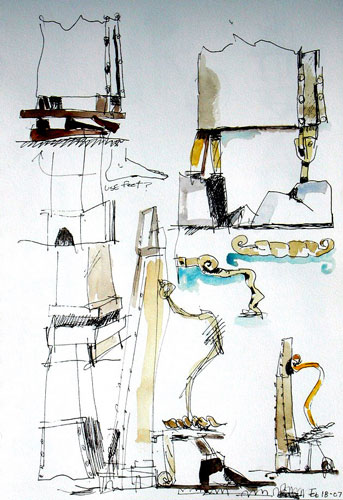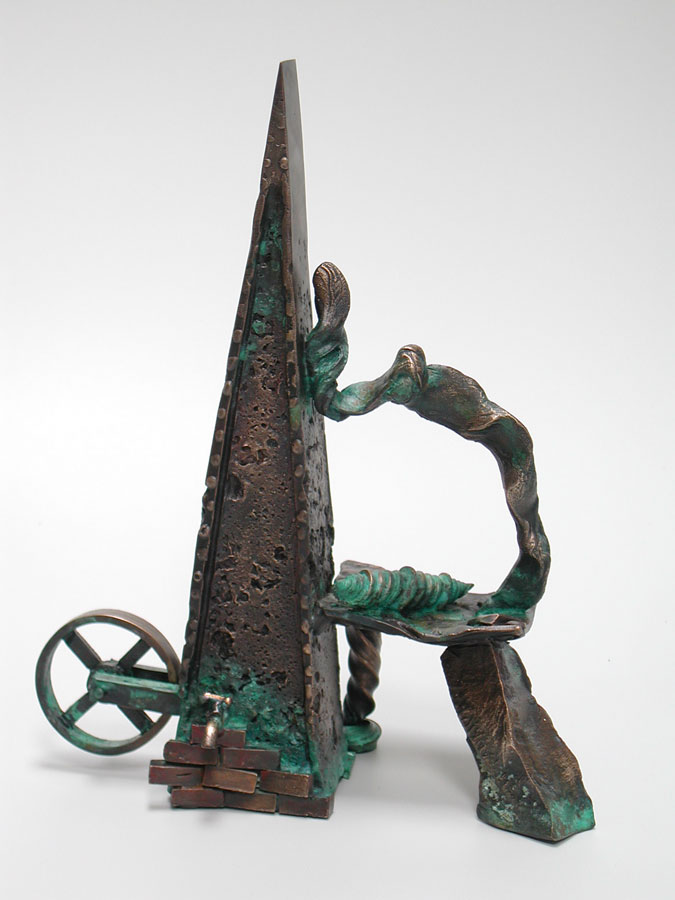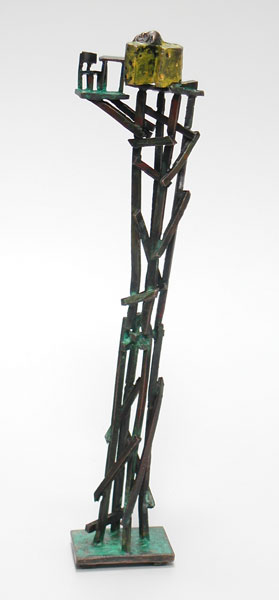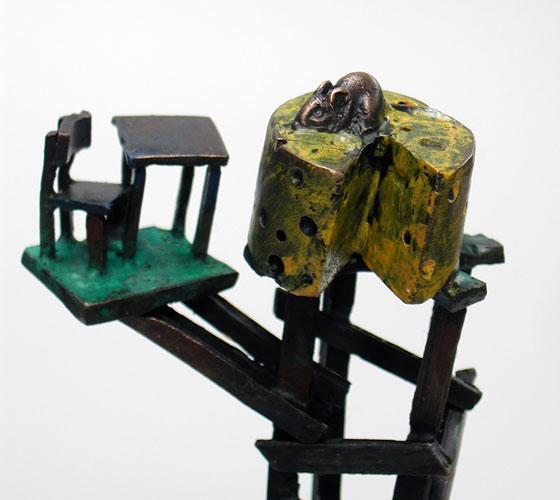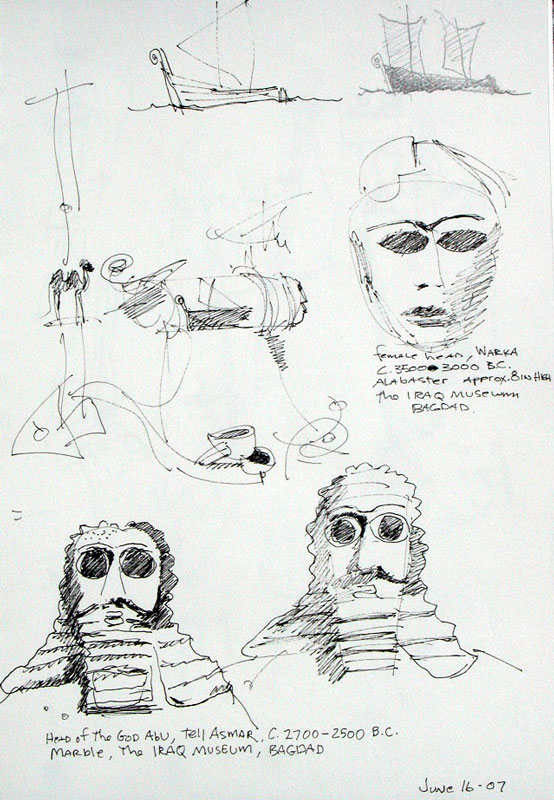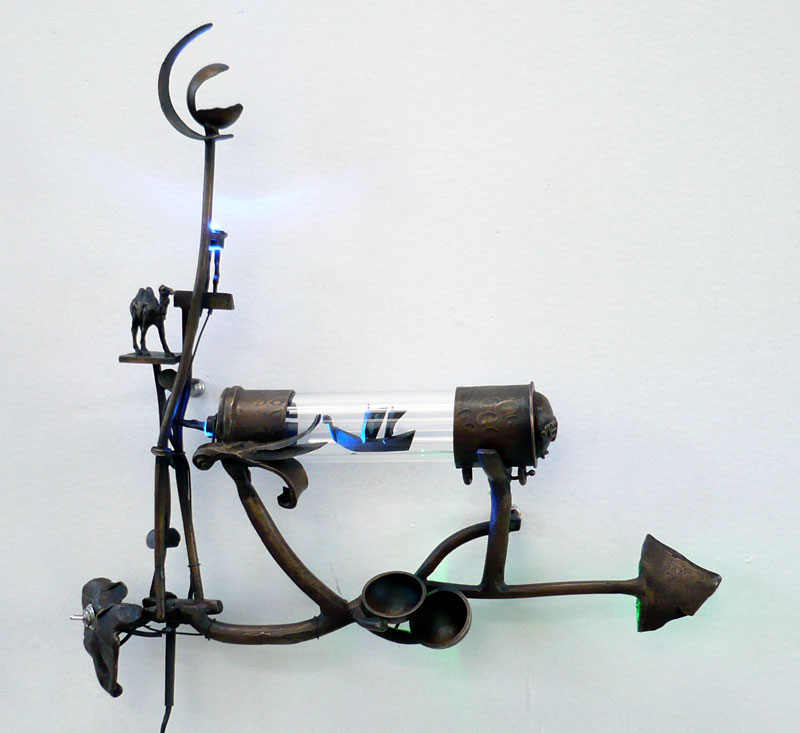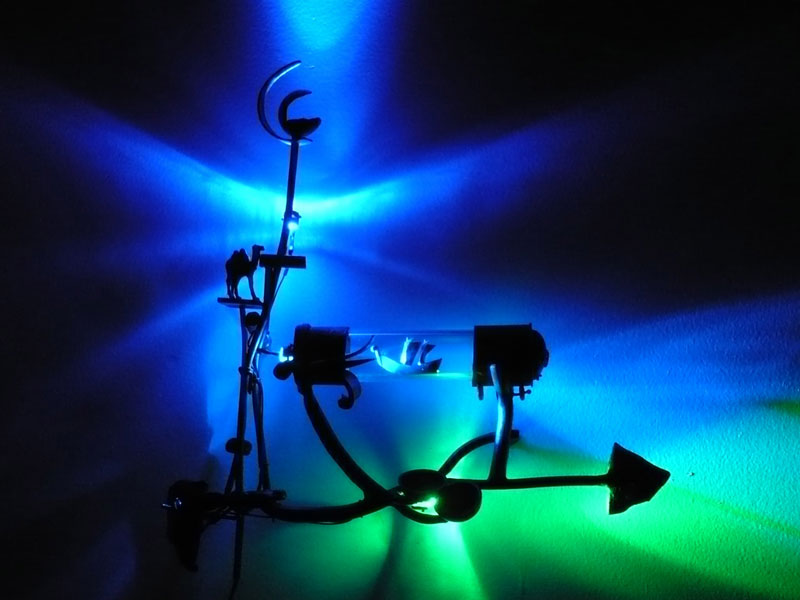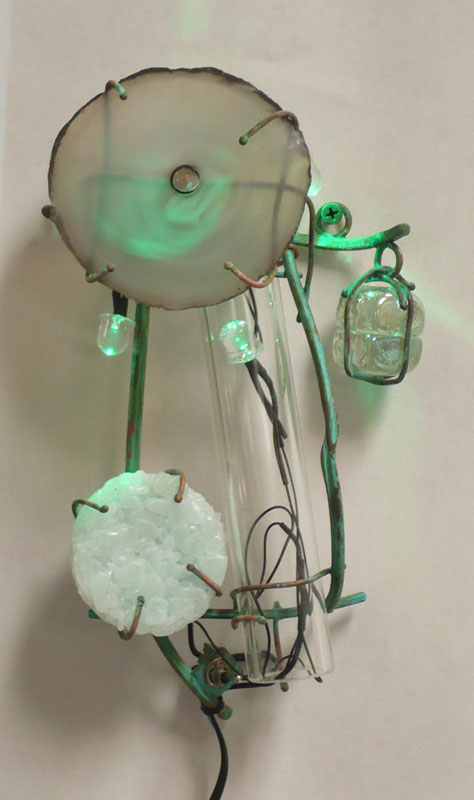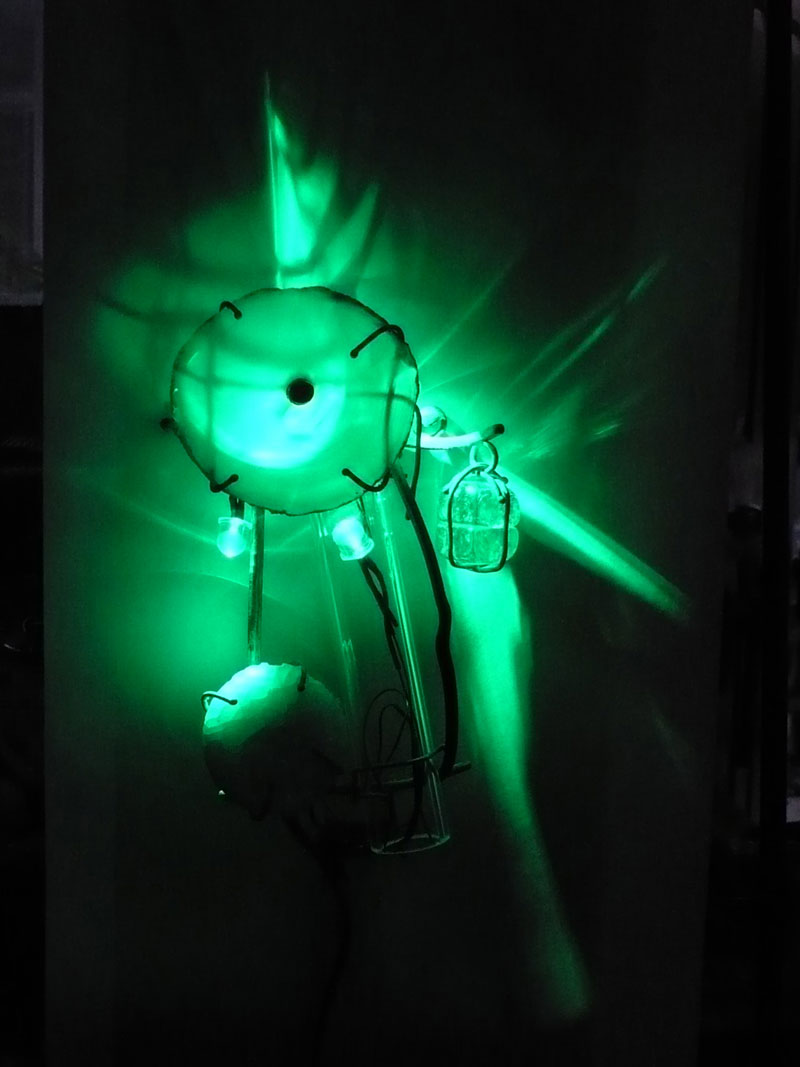Drawing and wax pattern for new work; it's a giant tractor carrying a section of ocean with a sailing ship laden with scaffolding holding a huge out of scale cannon on top. February, 2007
Work In Progress
Below are a series of pictures that illustrate the bronze casting process as I use it.
The pictures show roughly how the sculpture begins as a wax positive. The wax positive is first incased in a flask using heat-proof plaster. Once the plaster sets the flask is exposed to heat and steam in order to drain out the wax, leaving a void where the wax once was. After the wax is evacuated the flask is placed into a kiln and heated to 1350 degrees Fahrenheit for 24 hours. This burns out any residual wax and cures the plaster, making it ready to receive the molten bronze. The bronze is heated to a temperature of 2,000 degrees Fahrenheit. At the same time the flask is placed into a vacuum table I made which is operated by Diane. The bronze is poured under a vacuum into the cavity created by the removal of the wax pattern, which allows the bronze to fill the flask rendering extreme detail. After it has chilled, the bronze casting is removed from the flask and cut away from the casting forms. The pieces are now ready to clean up and assemble. After the assembly, which is done with welding and silver soldering, the sculpture takes form and is ready for the surface treatment which will give it a final patination. One can deduce from this process that the sculptures I make are unique (one of a kind). I do not make additions.
This is an ancient process known as Lost Wax or Cire-Perdue. The ancients used bees wax, pitch or natural latex for the pattern. I use paraffin and petroleum based wax. They used mud and clay for the investment material, and I use a special refractory plaster. The ancients used wood, charcoal, bellows and fans for the heat source. I use Propane and an electric blower. Other than these differences, if we had time machines we could easily work side by side and understand our processes completely.
1. Wax pattern with the frame work which will allow for the flow of molten bronze.
2. Wax pattern inside stainless steel flask. Holes are sealed with clear tape.
3. Special heat resistant plaster is poured into flask, incasing the wax pattern.
4. Cured flasks are placed in a steam cabinet in order to remove the wax pattern.
5. Under steam and heat most of the wax pattern is melted out and recovered.
6. Evacuated flasks are now ready to place in the kiln.
7. Flasks are placed in the kiln to eliminate residual wax and cure the plaster, 1350º f.
8. Diane preparing the vacuum table to accept the flask which is ready for the molten bronze.
9. Bronze has been heated to 2,000º f. and is being poured into the flask under a vacuum.
10. The bronze has chilled and is being removed from the flask.
11. After removing the bronze casting from the flask, the individual pieces are being cut from the supports.
12. The many pieces have been roughly separated.
13. Pieces have been cleaned, grit blasted and are ready for assembly.
14. Assembled sculpture is treated with heat and corrosive chemicals in order to enhance the surfaces.
Portable Evil Sets Sail 2007
20 X 10 X 6 inches
Unique cast and fabricated bronze
Details
Related drawings for Sacred Portable Potable from sketchbook # 21 2006-2007
Sacred Portable Potable 2007
9 x 7 x 4 inches
Unique cast and fabricated bronze
Detail
Marian's Mouse 2007
11 x 3 x 2 inches
Unique cast and fabricated bronze
Private collection
Abu's Journey Into Night 2007
13 x 13 x 3 inches
Unique cast and fabricated bronze, glass, found objects, light emitting diodes with
12 volt DC electrical circuit
Ms. Greenie 2007
11 x 7 x 3 inches
Unique fabricated copper and bronze, glass (some kiln fused), light emitting diodes with 12 volt DC
electrical circuit
